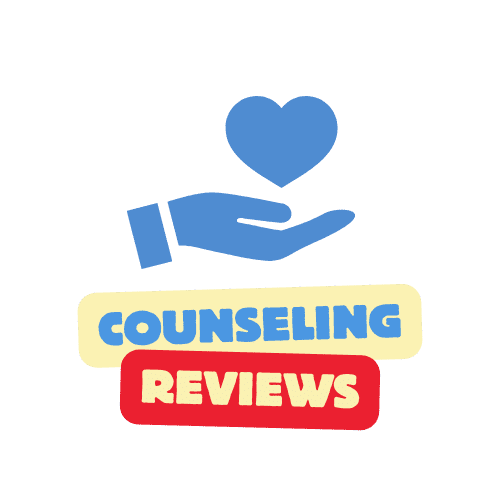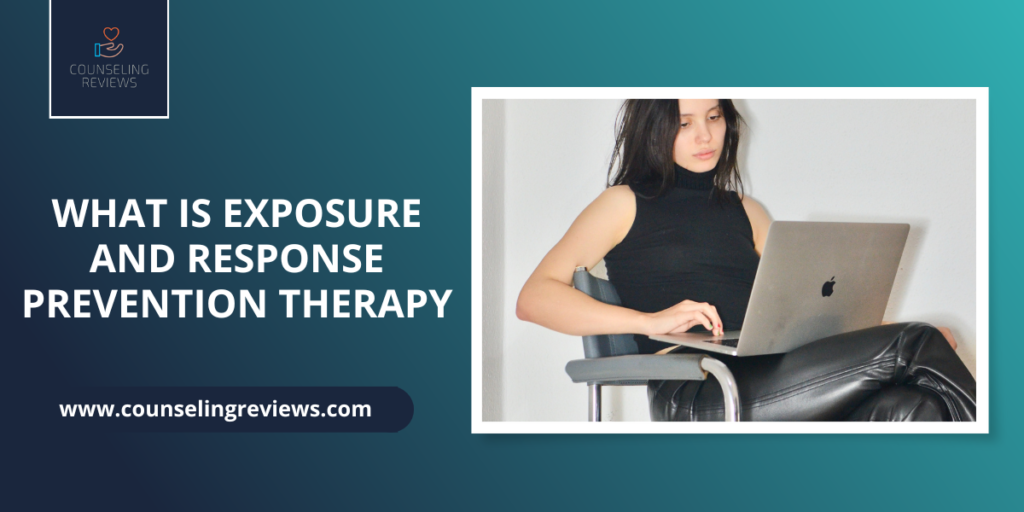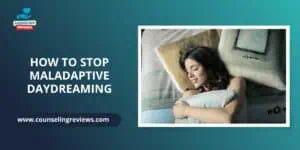Exposure and response prevention therapy, often known as ERP, is an evidence-based treatment for those diagnosed with obsessive-compulsive disorder (OCD). It has been used to treat other anxiety-oriented conditions too. It helps clients face their anxiety-causing stimuli and flow with the obsessive thoughts without using compulsions to neutralize them.
With OCD being quite common among males and females, an evidence-based treatment approach is necessary. ERP is often used with pharmacotherapy – another word for treating you with medicines.
Although ERP is used in many countries to treat OCD, in some countries, CBT is used. The UK is an example where CBT is primarily used to treat OCD, with elements of ERP integrated into the treatment regimen. However, in multiple other countries, ERP alone is used to treat OCD.
In this article, let’s look at what ERP is, how effective it is, and if it is the proper treatment approach for you if you have been diagnosed with OCD. We will also briefly examine what obsessions and compulsions are.
What is Obsessive Compulsive Disorder (OCD)?
OCD is a psychiatric disorder that causes you to think intrusive and repetitive thoughts, also known as obsessions, involuntarily. The intrusiveness of these thoughts can be extremely disturbing and anxiety provoking. No matter how hard you try, these obsessive thoughts may not go away.
In order to reduce your anxiety or fear, you may also end up doing things repeatedly. These repetitive actions or behaviors are called compulsions. In other words, compulsions ineffectively seek to reduce your anxiety caused by repetitive and troublesome thoughts.
How are obsessions different from being preoccupied with something?
A person may be preoccupied with cleanliness and clean the house regularly. They may also wash their hands often and talk about the importance of cleanliness to their friends and family. However, this may not cause distress to them, although people may find them “obsessed” with cleanliness. In other words, being preoccupied with something is not the same as being obsessed.
To be obsessed, the person should not only be preoccupied with something but also experience intrusive and involuntary thoughts that won’t go away. They cause extreme anxiety and fear unless compulsive behaviors are performed.
In contrast to the above example, a person with OCD may wash their hands dozens of times a day, even when the skin becomes dry and starts to peel. While washing hands may provide temporary respite from the anxiety and fear that obsessions cause, a person with OCD will soon be consumed by obsessive thoughts again. This is because they are involuntary and irrational.
Most of the time, an individual with OCD is aware of the unreasonable and intrusive nature of their thoughts and obsessions. However, they will not be able to stop their compulsive behaviors. Worse, indulging in compulsive behaviors worsens anxiety, and obsessions become firmly reinforced, leading to a vicious cycle.
What are some common types of obsessions and compulsions?
Some of the common forms of obsessive thoughts are
- Being infected by germs and thus engaging in repeated hand washing
- Fear of having forgotten something important such as locking the door or switching off the stove, and therefore repeatedly checking if nothing was forgotten
- Sexual obsessions such as fear of assaulting someone or engaging in what the individual believes to be “deviant sexual behavior.”
- Fear of killing or hurting someone violently, although the person knows he or she will never hurt even a fly
To stop these unpleasant and distressing thoughts, the individual may engage in compulsive behaviors such as counting, looking for patterns, uttering prayers, etc.
Both obsessions and compulsions can exist in myriad forms, but they usually exist together.
Can you have obsessions without compulsions?
There is another condition called “primarily obsessional obsessive-compulsive disorder,” in which the individual only experiences intrusive thoughts or obsessions but does not perform compulsive behaviors. The distress associated with this disorder can be much higher and is known to be more challenging to treat. The Diagnostic and Statistical Manual of Mental Disorders, Fifth Edition (DSM-5) no longer lists this as a separate disorder. OCD is the only diagnosis, and it is treated with medicines and one of the forms of CBT, particularly ERP.
What is ERP Therapy?
ERP therapy is a form of behavior therapy that gradually exposes a person to situations that cause obsessive thoughts, and prevents him or her from performing compulsive actions. Here is how it works in action:
Desensitization to triggers and habituation: When an individual is exposed repeatedly to a fear-provoking situation, the person gets desensitized to it. He no longer responds to it as strongly as he previously did, thanks to a process called habituation.
For example: after ERP sessions, a person may no longer feel the need to wash his hands even after touching a dreaded door knob several times.
Inhibitory learning: The person learns to form new associations and extinguish old ones. This is known as inhibitory learning. During inhibitory learning, a therapist uses practical exercises to form new associations with previously feared stimuli, so that fear-induced reactions are extinguished.
For example, a person who is afraid of germs on a toilet seat may “extinguish” his fear of getting infected when that never happens. Instead, he forms new associations of feeling relieved of having cleared his bowels or bladder.
Psychological empowerment: As the person begins to feel confident after a few ERP sessions, he experiences what is known as psychological empowerment. The client develops greater self-efficacy and learns to cope with uncertainties and fears without responding to them with compulsive behaviors. This enhanced confidence has an anti-anxiolytic effect, and further reduces the intensity of obsessive thoughts.
For example, a person who manages to stop washing his hands after touching a door knob may successfully begin to open taxi doors or touch door knobs in public places. Reduced anxiety may further empower a person to live freely.
Expectancy violation: Finally, when the worst fears do not materialize, the person experiences expectancy violation. In simple terms, what the client expects does not happen. Thus, the expectation of something catastrophic taking place is violated. As a result, what fed the obsession in the first place loses its value, and compulsions do not take place.
Example: When an individual does not get infected by a catastrophic infection after touching a toilet seat, they may stop caring about infections altogether, and live a normal and happy life.
Eventually, the person learns from experience that they do not need to perform rituals or compulsions to manage anxiety.
How Exposure and Response Prevention Therapy Helps Reduce Compulsive Behaviors
As seen from the examples above, compulsive behaviors may momentarily reduce the distress associated with obsessive thoughts. However, they do not stop these thoughts from recovering. On the other hand, a person with OCD continues to perform compulsive behaviors that fuel obsessive thoughts, leading to a vicious cycle, despite insight.
Exposure and response prevention (ERP) therapy aims at teaching the individual with OCD to stop performing compulsions so that the associated obsessive thoughts reduce in their frequency and intensity.
Along the way, they also learn relaxation techniques such as Jacobson’s Progressive Muscular Relaxation, diaphragmatic breathing, and others. These relaxation techniques help the individual calm down during ERP sessions when exposed to anxiety-provoking situations in a controlled environment.
What are the goals of ERP?
The goal of an ERP session is to help the individual understand their triggers and desirable and undesirable behaviors and end the cycle of performing compulsive behaviors in response to obsessive thoughts. Specifically, here are the goals:
- ERP addresses problematic behaviors resulting from anxiety-provoking thoughts and beliefs instead of working directly with those thoughts and beliefs.
- It empowers the person and boosts his or her self-confidence
- It aims to reduce distress in the shortest period possible
What Can ERP Therapy Treat?
ERP can be used to treat several psychiatric and psychological conditions in addition to OCD. These are some of the conditions that have successfully been treated with ERP:
- Eating disorders, such as anorexia and bulimia nervosa
- Social anxiety disorder and paruresis (fear of using public urinals)
- Panic disorder
- Specific phobias such as fear of spiders, fear of dogs, etc.
- Other disorders on the spectrum of anxiety and fear
As you can see, ERP performs well in terms of treating anxiety and fear-related disorders. However, it is most effective when it comes to OCD. Please note, ERP is not effective in other kinds of psychiatric conditions such as depression, schizophrenia, personality disorders, etc.
Why is ERP Therapy the recommended treatment for OCD?
ERP exposes a person with OCD to situations that trigger their obsessive thoughts. Once these obsessive thoughts are activated, the individual is helped to stop responding to them by performing compulsive behaviors. In other words, a person with OCD is exposed to their most feared situations and prevented from responding to those fears with compulsive behaviors. By doing so, a person eventually escapes the cycle of thinking obsessively and performing compulsive behaviors.
Compulsive behaviors are almost addictive, for the lack of a better word, as they provide momentary relief, as discussed earlier in this article. As ERP focuses more on preventing these behaviors, obsessive thoughts reduce in their frequency and intensity gradually.
ERP Techniques
ERP begins with identifying your triggers, associated thoughts and beliefs, and the compulsive behaviors you may perform. Then, the trained therapist makes a hierarchy of fear-inducing situations and prevents you from performing compulsions. The therapist then gradually introduces you to anxiety-provoking thoughts, images, situations, and sounds. You will be taught to resist your need to complete a compulsive behavior to escape the anxiety-provoking stimulus. All this takes place in a controlled environment, so you never feel unsafe.
Eventually, you get habituated to fear-inducing situations and no longer perform the compulsive behaviors.
Your therapist will use the following techniques to help you:
- Psychoeducation
This form of therapy helps you gain insight into your problem. Clinicians know that there is power in knowledge. Once psychiatric and psychological conditions are demystified, the associated distress often reduces to an extent. Hence, your therapist will help you understand what OCD is, how obsessions and compulsions feed each other, and why you need to stop performing your compulsive rituals. This new found knowledge helps reduce anxiety, and prepares you to address compulsive behaviors head on.
- Gradual exposures
Your therapist makes a hierarchy of triggers from the least to the most fearsome. Then, you will be gradually exposed to your triggers and prevented from performing compulsive rituals. Response prevention takes place in a safe and controlled environment so that you experience only the level of distress you can realistically bear. With time, you will be able to stop responding to fearful situations higher up on the hierarchy.
- Getting used to uncertainties
People with OCD often fear uncertainties. To use the example described above, a person who fears being contaminated and washes his hands repeatedly may be urged to touch a door knob, to begin with, and resist the urge to wash his hands. When nothing happens after touching the door knob, the person may be encouraged to touch something dirtier, such as an unclean kitchen counter. Again, the individual is encouraged not to perform the compulsive behavior, which in this case is to wash hands. Slowly, the individual gets used to the uncertainties of coming into close contact with contaminated surfaces and learns to stop performing compulsive rituals.
- Exposure scripts
Some triggering thoughts may be challenging to recreate in a therapeutic situation. In such a case, your therapist may create scripts and ask you to imagine them. When such imaginary situations cause distress, you will again be encouraged not to perform compulsive behaviors. However, this method is not as effective as being exposed to triggers in real life. Exposure scripts are used only when in-vivo (real life scenarios) techniques are not possible to implement.
- Delaying compulsive behaviors
Delaying a compulsive behavior has the same effect as not responding to an urge to perform compulsions. For example, after touching the door knob, the therapist and the client agree that the client can wash their hands after 30 minutes instead of immediately. This not only gives the client some comfort but also slowly reduces the anxiety associated with contamination. In addition, it empowers the person to learn how to deal with the urge to perform a compulsive action.
ERP Therapy vs. Talk Therapy
ERP Therapy is essentially behavior therapy. In other words, it focuses more on preventing you from performing certain undesirable behaviors such as compulsions (in the case of OCD), avoiding certain situations (using a public washroom), etc. However, ERP focuses only on the behavior, which are compulsions. It does not address the belief system or schema that triggers the thoughts.
Talk therapy, on the other hand, addresses problematic thoughts and beliefs. The most common form of talk therapy is CBT, which helps recognize cognitive distortions, dysfunctional beliefs, and automatic negative thoughts. It is important to note that OCD has several dysfunctional beliefs and cognitive distortions that maintain it. A combination of talk therapy and ERP therapy is often used by skilled clinicians to give the best fighting opportunity to their clients.
Is ERP another version of CBT?
An ERP therapist first understands the nature of your obsessive thoughts and your repertoire of compulsive behaviors. It is important to note that CBT-oriented therapists often use ERP as part of their larger treatment plan to address OCD and other disorders. However, it would be somewhat reductive to say that ERP is another version of CBT.
ERP is more of a behavior therapy than a cognitive behavior therapy. It employs behavioral techniques to address compulsions, and does not address dysfunctional belief systems that maintain obsessive thinking patterns.
Nevertheless, OCD and other disorders are best treated when CBT is combined with specific treatments such as ERP. When necessary, a psychiatric referral for medicines may be sought too.
ERP is an effective treatment for OCD and other anxiety-oriented disorders
As the name suggests, exposure and response prevention therapy exposes individuals to their most feared stimuli. It prevents them from responding by performing compulsions. It is most often used in the treatment of obsessive-compulsive disorder. Still, it has also been found helpful in treating other anxiety-driven conditions. For instance, it has been used in treating paruresis, social anxiety disorder, eating disorders, and other conditions that fall under the spectrum of anxiety disorders.
Behavior therapies and learning theories influence ERP. As a result, it uses desensitization, positive and negative reinforcements, relaxation techniques, and response extinguishment to prevent undesirable behaviors. Although ERP therapists may use CBT techniques, it is more behavior-therapy oriented. There is more “doing” than “talking” during an ERP session.
However, it is not uncommon for CBT therapists to use ERP when treating compulsive behaviors in an OCD-diagnosed individual. Using ERP alongside traditional CBT is more effective as both compulsive behaviors, and the dysfunctional beliefs that trigger them are targeted.





